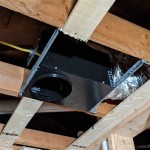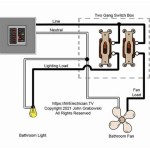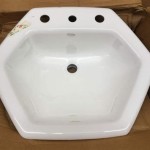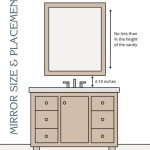Installing a Washing Machine Under a Bathroom Sink
Installing a washing machine under a bathroom sink offers a practical solution for small spaces, maximizing functionality without compromising valuable floor area. This undertaking, however, requires careful planning and execution due to the complexities involved in plumbing and electrical connections in a confined space.
Assessing the Feasibility
Before embarking on this project, careful assessment of the bathroom's dimensions and existing plumbing is crucial. Measure the available space under the sink, ensuring it can accommodate the chosen washing machine's dimensions, leaving enough clearance for ventilation and maintenance access. Verify the sink's plumbing configuration and drainage capacity to handle the added wastewater discharge from the washing machine.
Choosing the Right Washing Machine
Standard-sized washing machines are generally unsuitable for under-sink installations. Compact or mini washing machines, specifically designed for smaller spaces, offer the ideal solution. These machines typically have smaller dimensions and lower water consumption, making them compatible with limited plumbing systems. Consider models with a front-loading design, as they require less clearance for door opening compared to top-loading machines.
Plumbing Considerations
The existing plumbing system might need modifications to accommodate the washing machine's water supply and drainage. A dedicated cold-water supply line with a shut-off valve should be installed for the washing machine. The sink's drain pipe might require adjustments to accommodate the washing machine's discharge hose, potentially involving the installation of a standpipe and P-trap assembly. It's crucial to ensure proper venting to prevent sewer gases from entering the bathroom.
Electrical Requirements
Washing machines require a dedicated electrical circuit. Consult local building codes to determine the appropriate amperage and wiring specifications. A Ground Fault Circuit Interrupter (GFCI) outlet is essential for safety in a bathroom environment, protecting against electrical shocks. Avoid overloading existing circuits, which could pose a fire hazard. A qualified electrician should handle all electrical work.
Installation Process
Begin by shutting off the water supply to the sink and disconnecting the existing plumbing. Install the washing machine's water supply hoses, ensuring tight connections to prevent leaks. Connect the washing machine's drain hose to the standpipe, using appropriate clamps to secure the connection. Position the washing machine under the sink, ensuring it's level and stable. Connect the electrical supply to the dedicated GFCI outlet. Before restoring water supply, thoroughly inspect all connections for leaks.
Ventilation and Maintenance
Adequate ventilation is crucial to prevent moisture buildup and potential mold growth. Ensure sufficient clearance around the washing machine for air circulation. Regularly inspect the water supply hoses and drain connections for leaks or signs of wear. Access to the washing machine's back panel should be maintained for maintenance and repairs. Installing an access panel in the sink cabinet can provide convenient access without removing the entire unit.
Safety Precautions
Throughout the installation process, prioritize safety. Wear appropriate safety glasses and gloves to protect against potential hazards. Carefully follow the manufacturer's instructions for both the washing machine and the sink. Consult with qualified professionals for any plumbing or electrical work beyond your expertise. Regularly inspect the installation for leaks or other issues to ensure safe and efficient operation.
Space Optimization
Maximizing the limited space under the sink requires careful planning. Consider using storage solutions designed for small spaces, such as shelving units or drawers, to organize cleaning supplies and other bathroom essentials. Ensure that these storage solutions don't interfere with the washing machine's operation or ventilation.
Choosing the Right Sink
The selection of the bathroom sink plays a vital role in the successful integration of an under-sink washing machine. A pedestal sink or a wall-mounted sink offers better clearance compared to a traditional vanity cabinet. If a vanity cabinet is preferred, choose one with a reduced depth to accommodate the washing machine underneath. Ensure the sink's plumbing configuration is compatible with the washing machine's installation requirements.
Careful planning, proper execution, and adherence to safety guidelines are crucial for a successful under-sink washing machine installation. Considering these factors can lead to a functional and space-saving laundry solution in even the smallest of bathrooms.

Washing Machine Mounted Under The Bathroom Sink

Installation Of The Washing Machine Under A Sink Small Bathroom Mold In

Creative Small Bathroom Decor Ideas Sink Over Washing Machine

Solved Integrating Vanity With Washing Machine Bunnings Work Community

How To Install A Sink On Washing Machine Detailed Instructions For Choosing And Installing

Creative Small Bathroom Decor Ideas Sink Over Washing Machine

Washing Machine Mounted Under The Bathroom Sink

Tips On Adding A Washer Dryer In The Bathroom

13 Ways To Hide A Washing Machine Unnoticed In Bathroom Interesting Solutions

Kitchen Or Bathroom Twitter Lands Into Debate Over Washing Machine S Placement Trending Hindustan Times
Related Posts







